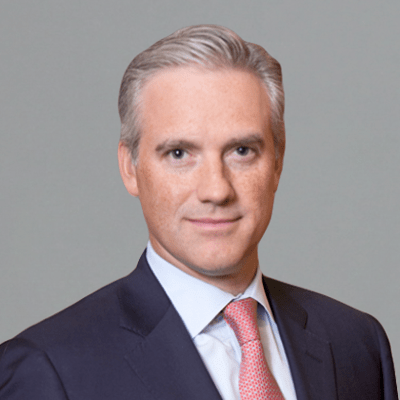Capitalize on periods of volatility, and keep portfolios fully invested. Learn how year-round tax-loss harvesting can make that happen.
In fixed income markets, 2022 was undoubtedly an interesting time. As of this writing, it was the worst year for bonds in more than a century. Investors also faced inflation at 40-year highs, unprecedented quantitative tightening with simultaneous rate increases, and correlated equity and bond price action. All this occurred against a backdrop of the ongoing Russo-Ukrainian War, an ebbing COVID-19 pandemic, and accelerating climate change. Tumultuous may be an understatement.
We’re hopeful, however, that 2023 will be a transition year, where market behavior is less of an outlier. We expect to see a resumption of positive returns, a reduction in volatility, and a revalidation of historic relationships where high-quality bonds once again provide diversification benefits. In short, we see 2023 being a year when the market gets back to basics.
Our vision of back to basics is the three Rs—not in this case the traditional reading, ‘riting, and ‘rithmetic but rather the three Rs of fixed income investing: recession, rates, and returns. Let’s explore each of these 2023 themes in turn.
Is a recession ahead?
As rate hikes impact the economy, data indicates growth has slowed. While it’s possible the Fed may still achieve a soft landing, bringing down inflation while maintaining economic growth, there’s a growing expectation among market participants that the US could slip into a recession in early 2023. Several factors make us inclined to believe this will be the case.
The inversion in the Treasury curve between the two- and 10-year yields that began on July 5, 2022, widened from 50 basis points (bps) at the beginning of November to 76 bps as of this writing. Historically, this type of inversion has been a good predictor of a contraction in economic activity. We interpret that widening inversion as a sign investors expect a recession.
Loss aversion is likely influencing investor behavior as well. The drawdown in financial assets and a teetering real estate market have eroded consumer confidence. The Conference Board Consumer Confidence Expectations Index reflected nine-year lows in July before rebounding. The latest reading in September was only 78.1, well below the 10-year average of 91.92. The wringing out of some economic excesses fueled by pandemic-era stimulus has no doubt exacerbated this lack of enthusiasm. By some accounts, the crypto markets have shed as much as $3 trillion in value, on top of losses in the bond markets of as much as $4.3 trillion.
All the above goes into our assessment that a 2023 recession is a distinct possibility. This would draw demand out of the system and significantly reduce inflationary pressures. The Fed will play a part in determining the depth and duration of a recession, which brings us to our next R: rates.
Rates
We know the Fed is committed to bringing inflation down. Chair Jerome Powell has staked the Fed’s credibility on achieving this goal and appears willing to accept a recession as a consequence of the Fed’s action. “No one knows if there is going to be a recession or not,” he said on November 2, “and if so, how bad that recession would be, and our job is to restore price stability so that we can have a strong labor market that benefits all over time, and that’s what we are going to do.”
Having increased the lower boundary of the funds rate from 0% to 3.75% in 11 months, it would be difficult to argue the Fed hasn’t been aggressive in raising rates. These hikes are having an effect. We have begun to see progress in the data, but the overall inflation rate remains uncomfortably high.
The markets expect the Fed to pivot in 2023 from a tightening monetary policy to a neutral stance. These expectations have been supported by the Fed’s dot plots, which indicate the end of the tightening cycle may be near. Indeed, Powell is now signaling as much. With the federal funds upper bound currently at 4% and the two-year Treasury yield around 4.5%, we now project a terminal rate of 5%. Market participants seem to have a consensus view on how interest rates might move, but the issue remains one of timing.
We’ve been impressed with the resilience of the economy in the face of a hawkish Fed. The labor markets remain robust, bank net interest margins are healthy, and consumers seem to be in good shape. While a recession is likely on the near horizon, it may be a mild one. Market participants appear to be focused on getting ahead of the Fed. Any signs of a disinflationary trend will likely result in a decline in yields out the curve. We saw an example of this when the 10-year Treasury yield fell 28 bps in a day following the October CPI report. The markets ignored the 6.3% annual increase in the core rate and focused instead on its decline from 6.6% in September. Against this background, if the Fed does cut rates in 2023, it may be more of a confirmation than an indication. This brings us to our third R: returns.
Flexible fixed income solutions for turbulent times
Returns
Starting yield is an important determinant of future returns. Intermediate municipal and corporate bond yields are close to their highest levels since the 2008 credit crisis. Valuations are significantly more attractive than they were at the beginning of the year. Corporate yield increases have more than kept up with inflation expectations, nearly tripling since the beginning of the year on intermediate bonds to 5.2%. For a New Yorker in the top tax bracket, the tax-equivalent yield (TEY) on an A-rated state-specific portfolio is over 7.5%. Bonds are back.
Importantly, the rise in yields didn’t result from credit concerns. Financial conditions are decent: Tax receipts have remained healthy, and stimulus funds have enabled issuers to build up reserves and rainy-day funds to weather any recession. While more than a decade of low rates incentivized debt issuance, corporate balance sheets remain healthy. Entering a recession, doing the credit homework will be important in both markets, but opportunities abound.
We expect that 2023 will be a year of positive returns for bonds. Equally importantly, we think the first quarter of the year will present an attractive entry point. While the income on cash sweeps and CDs can seem seductive, we like extending out the curve to lock in rates. Treasury yields can seem compelling, but as we noted above, corporate yields have more than kept pace. While muni ratios have tightened, for top taxpayers, they provide a more attractive TEY, particularly outside of 10 years. All in all we see early 2023 as a period when market participants shift from a fear of loss to a fear of missing out. The risk is that inflation lingers and the Fed is forced to tighten more than currently anticipated. Volatility in the bond markets went up in 2022, and we’ll likely see more periods of V-shaped recovery and selloffs in 2023, but we believe the overall path will be toward normalization.
Given the yields available today, conservative investors might consider A-rated one- to five-year ladders, while more risk-tolerant investors might want to lock in these yields for longer. For corporate investors, this might mean one- to 10-year BBB ladders and for municipal investors, it might mean five- to 15-year or even 10- to 20-year ladders. An online ladder calculator can offer insight into the yields available out the curve.
The bottom line
These are indeed interesting times. And as in other times of tumult, investors may be longing for a return to normalcy. As we see it, the three Rs of fixed income investing—recession, rates, and returns—show a stabilizing 2023. While a recession may be likely, we believe it will be a mild one. The Fed is already showing signs of reducing—if not exactly reversing—rate hikes, and both muni and corporate bond markets may offer some promising opportunities.













